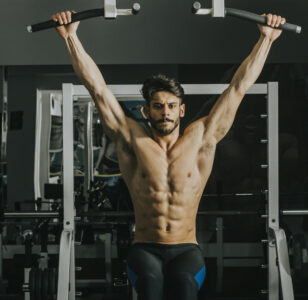
“Muscle growth” and “fat reduction” are often used in tandem. Most individuals who have been routinely “eating properly” and “exercising” may find it difficult to Lose Fat and Gain Muscle simultaneously. It simply implies that you must prioritize one objective at a time. The article will explain why it is difficult to simultaneously lose fat and gain muscle and provide various advice for different objectives.
Why is It Tough to Simultaneously Lose Fat and Gain Muscle
To lose fat or weight, the body must be in a “caloric deficit.” The fewer calories you consume daily, the more weight you may lose; To grow muscles, the body needs a “caloric surplus” to provide the energy required for self-repair and to create muscle mass. If you try to lose fat and gain muscle at the same time, you won’t make much progress toward either goal. We have also published “How to lose 3 pounds in 1 day.” If you are interested, you can also click relifesports to see
So, how can one simultaneously shed fat and build muscle? To address this subject thoroughly, we must first discuss bodily recomposition.
What Is Body Composition?
Body recomposition happens when the proportion of fat to muscle in the body changes. When most individuals use the term “body recomposition,” they mean losing body fat and gaining lean muscle.
The human body is not a single mass of identical tissue. Muscle and fat are two functionally distinct ‘compartments.’
Muscle is constructed of cells known as “myofibers,” which are built of individual protein blocks known as “myogenic fibers.” At the same time, fat tissue is composed of different carbon, hydrogen, and oxygen atoms. Since muscle and fat cells have different chemical makeup, none can be transformed into the other.
The Law of Thermodynamics
Let’s start by considering the first law of thermodynamics—energy conservation. It’s a law of energy balance.
This law states that energy can neither be created nor destroyed. Energy has to go somewhere and doesn’t just disappear.
An energy (calorie) surplus will lead to storage. An energy deficit will result in energy leaving the body.
In nutrition terms, you may have heard this concept explained like this.
- To lose weight, you must have a caloric deficit (consuming fewer calories than you burn).
2. To gain weight, you must have a caloric surplus (consuming more calories than you burn).
To build muscle or fat cells, your body needs energy. Your body will release energy when it breaks these cells down.
What Happens After You Consume Food?
When your body digests the food you consume, do the calories go to muscle or fat tissue? Will your body draw from muscle or fat tissue as you burn calories (and energy leaves the body)?
This is known as “calorie partitioning,” and it is a necessary step in understanding if (and how) you can develop muscle and shed fat simultaneously.
You have no control over where your calories go (fat or muscle) and whether you consume more or less.
If you had the option, you’d probably prefer that 100% of your calories go to muscle tissue and none to body fat.
It would also be more convenient if all calories were obtained from fat reserves. That would make it very simple to shed fat while gaining muscle. that is not the case.

What Exactly is Calorie Partitioning?
When discussing how calorie partitioning works, researchers use a term known as the P-ratio. This is the quantity of protein acquired (or lost) due to excess (or under)feeding.
How Does Calorie Partitioning Work?
The majority of the P-ratio is outside our direct control. But we can manage around 15–20% of it with diet and exercise.
Hormones have a significant role in establishing your P-ratio.
Generally, elevated testosterone levels have beneficial partitioning effects. Chronically elevated cortisol levels have the opposite impact. The difficulty is that the P-ratio represents the influence on the whole body. It cannot forecast the partition (that is, when you are in a surplus, it cannot estimate the proportion of your energy used to create muscle cells as opposed to fat cells).
Theoretically, if your body had sufficient stimuli (such as strength training), protein, and water, it might take energy from your fat cells to construct muscle tissue. That would be the closest we could get to losing fat and building muscle at the same time.
Theoretically, this is feasible but quite improbable for most people. (It is also essential to recognise that just because something is feasible does not always make it the best technique or plan.)
Who Can Lose Fat and Gain Muscle Simultaneously?
After reading the facts above, you may feel pretty doubtful about your ability to lose fat and gain muscle at the same time after reading the facts above.
However, three organizations can likely accomplish this goal!
Several factors will determine if you can simultaneously grow muscles and lose fat.
training age
Current physique composition
Genetics
Insulin sensitivity and hormonal balance
Now let’s examine each of the three categories in further detail

How to Lose Fat at The Gym
Beginners with more body fat tend to lose fat while building (or at least keeping) muscle mass.
Individuals who are new to strength training can increase muscle mass pretty quickly. And with a larger proportion of body fat, their bodies have more energy to spare for muscle building.
There is also a possibility that these people are insulin resistant. Simply put, their fat cells “do not want” additional energy.
Athletes who took time off (either by choice or because of an accident, etc.) and lost muscle mass and acquired body fat will have an easier time recovering that bulk (owing to satellite cells and the muscle memory effect).
In addition, they often have established training routines and timetables that facilitate consistency.
Athletes may be required to prioritize one objective before moving on to the next. A seasoned athlete may, for instance, go through a phase of calorie excess to gain muscle, followed by a period of weight loss while keeping as much muscle as possible.
Usage of Steroids and Muscle Gain
We won’t spend much time on this topic since it’s not something we endorse, but you get the point. Steroids “override” regular physiology and make it far simpler to grow muscles while losing fat.
How to Reduce Body Fat and Gain Muscle
Since there are three smaller groups, you may ask, “If I don’t fit into these categories, can I still lose weight and increase muscle?”
The answer is “maybe.”
However, you risk “spinning your wheels” and making little progress in either direction. The leaner and more muscular you are, the less likely it is that you will simultaneously lose fat and gain muscle.
In other words, the more “advanced” your training and body composition, the slower the “body recomposition.”
For many people, neither their diet nor their workout routine is ideal for either fat reduction or muscle building. For instance, they may consume too few calories to encourage muscular building but too many for fat reduction.
This might result in no change at all.
Should I Focus on Gaining Muscle or Losing Weight First?
We advocate dividing your trip into distinct stages – fat reduction or muscle building – and concentrating on one at a time for most folks. This is likely to result in faster outcomes.
In most situations, you’ll need to concentrate on shedding fat before reversing your diet to increase calories and gain muscle gradually. This lets you “lean out” and stay lean while your workouts and diet are geared toward building muscle. In addition, visit here if you want to know more about the advantages and disadvantages of individual fitness and group workouts fitness
What to Eat for Muscle Gain and Fat Loss
Protein and Muscle Gain.
Protein serves a crucial function in maintaining muscle mass. If you are cutting calories to lose fat, eating enough protein will give your body the best chance of keeping muscle mass.
Protein also enhances the probability that, when the body requires energy, the muscles will not be broken down to provide it. Consuming sufficient protein aids in muscle repair after strenuous exercise.
How Much Protein Do I Need?
However, research indicates that 0.8–1 g per pound of body weight is an appropriate starting point for most individuals, particularly those who engage in resistance exercise. You must ensure that your entire caloric intake is consistent with your objectives.
Strength Training for Fat Loss
Because resistance exercise increases muscle development, it may help you retain more muscle while losing fat. This may help prevent muscle loss associated with low-calorie diets.
In addition to its fat-burning benefits, resistance training has a high post-exercise oxygen demand. This implies that after weightlifting, your metabolism may remain elevated for longer, allowing you to burn more calories even after your exercise is over.
When you gain or keep muscle, your resting metabolic rate (RMR) stays high, so you burn more calories when you’re not doing anything.












